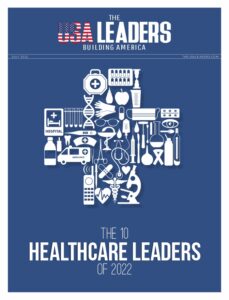Is your clinic or hospital built for comfort, care, and efficiency? The way a healthcare facility is designed affects how smoothly it runs each day.
Patients notice how easy it is to find their way around. Staff need space and tools that help them provide care faster.
Good design can even reduce stress and prevent mistakes. In today’s competitive healthcare market, smart design matters more than ever.
This article will show how expert healthcare design services can improve safety, workflow, and the patient journey from start to finish. Read on!
Why Good Design Matters in Healthcare
Patients and providers can both benefit from a well-designed healthcare space. Guests will have less time to wait and be less confused.
Setting up things in a neat and clean way speeds up and protects treatment. The way facilities are designed can also affect how patients think and feel. It’s easier to heal and remember good things about a place that is calm.
Creating a Patient-Friendly Environment
A lot of the time, patients are scared or anxious in medical settings. Natural light and soothing colors are small things that can make a big difference.
It’s easy to find your way when the hallways are wide and there are clear signs. There shouldn’t be a lot of people or a cold feeling in waiting areas. These kinds of design choices help patients feel more at ease and cared for.
Improving Safety Through Smart Design
In every hospital and clinic, safety is the most important thing. By using materials that are easy to clean, the design can stop the spread of germs.
Cross-contamination can be avoided by making sure there is enough air flow and separating staff and patient traffic. Smart layouts also keep people from slipping and falling. All of these small design choices make things safer for everyone.
Supporting Staff with Functional Spaces
Doctors, nurses, and staff need workspaces that help them do their jobs well. Clear paths between rooms save time during emergencies.
Supply rooms should be close to patient areas for quicker access. Break rooms give staff a place to recharge and reduce burnout. Good design supports teamwork and smoother communication.
Maximizing Efficiency and Technology Integration
Modern clinics and hospitals rely on technology for better care. Design must include places for computers, monitors, and other devices.
Power outlets, data cables, and wireless systems should be easy to access. Good planning prevents clutter from wires and machines.
Efficient design helps staff use tech tools without delay. For more information, view healthcare architecture solutions designed with these needs in mind.
Planning for Future Growth and Flexibility
As time goes on, healthcare needs change, so the design should make it easy to make changes. Rooms can be changed so they can be used for different things.
Modular furniture and walls make it easy and cheap to make changes. When you plan, you have less downtime when upgrades are needed. Your investment will be safe for years to come if the design is ready for the future.
Improve Efficiency and Patient Experience With Healthcare Design Services
Expert healthcare design services help clinics and hospitals deliver care that’s smooth, safe, and patient-centered. From calming waiting areas to efficient staff zones, every design choice has a purpose.
Safety improves, workflow gets easier, and patients feel more comfortable. A well-designed space also supports growth and keeps up with changing needs.
For healthcare providers, this means better service, fewer mistakes, and a stronger reputation. Trusted design experts understand how to bring all these pieces together.
Did you like this guide? Great! Please browse our website for more!
Also Read: DevOps Adoption Challenges in Healthcare: All You Need to Know





















